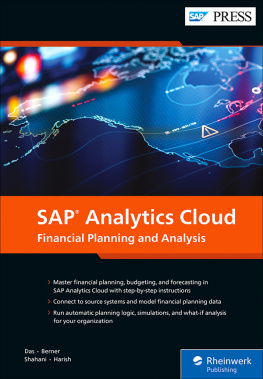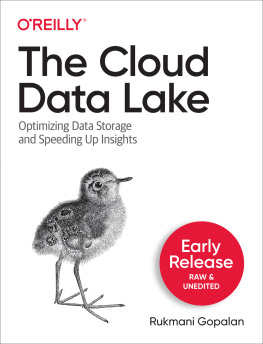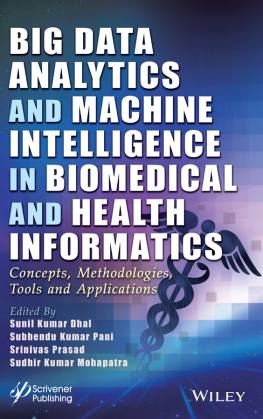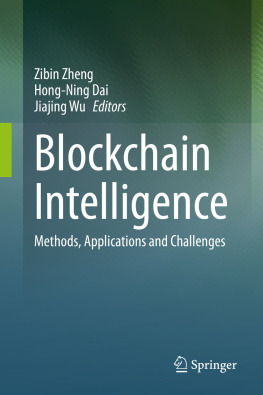We hope that you liked this e-book. Please share your feedback with us and read the to find out how to contact us.
Dear Reader,
Every year, our world gets smarter.
Its not only our devicesintelligence is a focus in many areas of our lives. In the classroom, we advance our human intelligence with evolving curriculums and new ways of learning. Emotional intelligence has been brought into the psychological spotlight as we improve how we understand and convey emotions. Then theres artificial intelligence, a huge buzzword in the technological space. Were always making our machines smarter, from texting with autocompletion on our phones, to asking our digital assistant about the weather, to testing out self-driving capabilities on the road, and beyond.
But what about data intelligence ? The namesake of SAPs new data management solution falls into a category of its own. Its not the data, but rather how we collect, govern, orchestrate, and analyze it, thats advancing. SAP Data Intelligence includes a set of applications that help organizations manage their data with greater efficiency and more possibilities than ever before with integrated machine learning technology.
How can you catch up with data intelligence? Dharma Teja Atluri, Devraj Bardhan, Santanu Ghosh, Snehasish Ghosh, and Arindom Saha have combined their expertise in various SAP areas, spanning from artificial intelligence, to enterprise information management, to analytics, to business intelligence, into this book. This is your complete guide to a more intelligent data landscape!
What did you think about SAP Data Intelligence: The Comprehensive Guide ? Your comments and suggestions are the most useful tools to help us make our books the best they can be. Please feel free to contact me and share any praise or criticism you may have.
Thank you for purchasing a book from SAP PRESS!
Megan Fuerst
Editor, SAP PRESS
www.sap-press.com
Rheinwerk Publishing Boston, MA
Notes on Usage
This e-book is protected by copyright . By purchasing this e-book, you have agreed to accept and adhere to the copyrights. You are entitled to use this e-book for personal purposes. You may print and copy it, too, but also only for personal use. Sharing an electronic or printed copy with others, however, is not permitted, neither as a whole nor in parts. Of course, making them available on the internet or in a company network is illegal as well.
For detailed and legally binding usage conditions, please refer to the section .
This e-book copy contains a digital watermark , a signature that indicates which person may use this copy:
Notes on the Screen Presentation
You are reading this e-book in a file format (EPUB or Mobi) that makes the book content adaptable to the display options of your reading device and to your personal needs. Thats a great thing; but unfortunately not every device displays the content in the same way and the rendering of features such as pictures and tables or hyphenation can lead to difficulties. This e-book was optimized for the presentation on as many common reading devices as possible.
If you want to zoom in on a figure (especially in iBooks on the iPad), tap the respective figure once. By tapping once again, you return to the previous screen. You can find more recommendations on the customization of the screen layout on the .
Preface
Welcome to the first comprehensive guide on SAP Data Intelligence. SAP is constantly on its own innovation journey to provide the best services to organizations. Aligned with that vision, SAP Data Hub was released in 2017 with the primary objective of deploying data orchestration and management capabilities based on Kubernetes. With the introduction of much more enhanced features, along with its place as a managed service on SAP Business Technology Platform (SAP BTP) and on-premise, SAP Data Hub evolved into what is now known as SAP Data Intelligence. In 2019, SAP decided to make SAP Data Intelligence a one-stop shop for integration, metadata management (data profiling, data lineage), connectivity, and orchestration, along with the machine learning services that support both built-in and bring your own model (BYOM)-based scenarios. Now, critically, organizations can have one tool to support multiple personas including data engineers, data stewards, data analysts, data scientists, and administrators. This flexibility allows organizations to reduce their implementation, maintenance, and operational costs with artificial intelligence (AI)/machine learning scenarios while increasing productivity and flexibility with both cloud and on-premise deployment options.
Why Read This Book?
With data as the new oil, many organizations have focused on data and analytics strategies to establish data-driven platforms that not only help with the consumption of SAP and non-SAP data sets (structured and unstructured) but also can process data in real time to derive insights and support business users in making insight-driven decisions. Your business can take advantage of the current market model of dynamic data processing rather than surviving on a traditional multiplatform approach for loading and processing data. This shift in priorities introduced many changes in recent years, first with SAP Data Hub and now with SAP Data Intelligence in the current context. Furthermore, the rapid pace of innovation that come alongside those changes have resulted in a need for more expertise and experience with SAP Data Intelligence from an architectural point of view, which is critical to achieving the desired strategy. We know that information is available for certain aspects of SAP Data Hub and SAP Data Intelligence, but we believe that other sources only cover a subset of the overall information and/or only address a specific audience. With this book, we hope to provide a comprehensive overview of many different aspects of SAP Data Intelligence from multiple industry, business, and technical perspectives.
In this book, well also share our experiences from different client scenarios, as well as discuss common challenges and how to address them, with best practices and business content. In addition, weve identified a need to prepare customers the use cases where SAP Data Intelligence stands out compared to other extract, transform, and load (ETL) tools available and a need to provide customers with the right setup to put together the business case.








